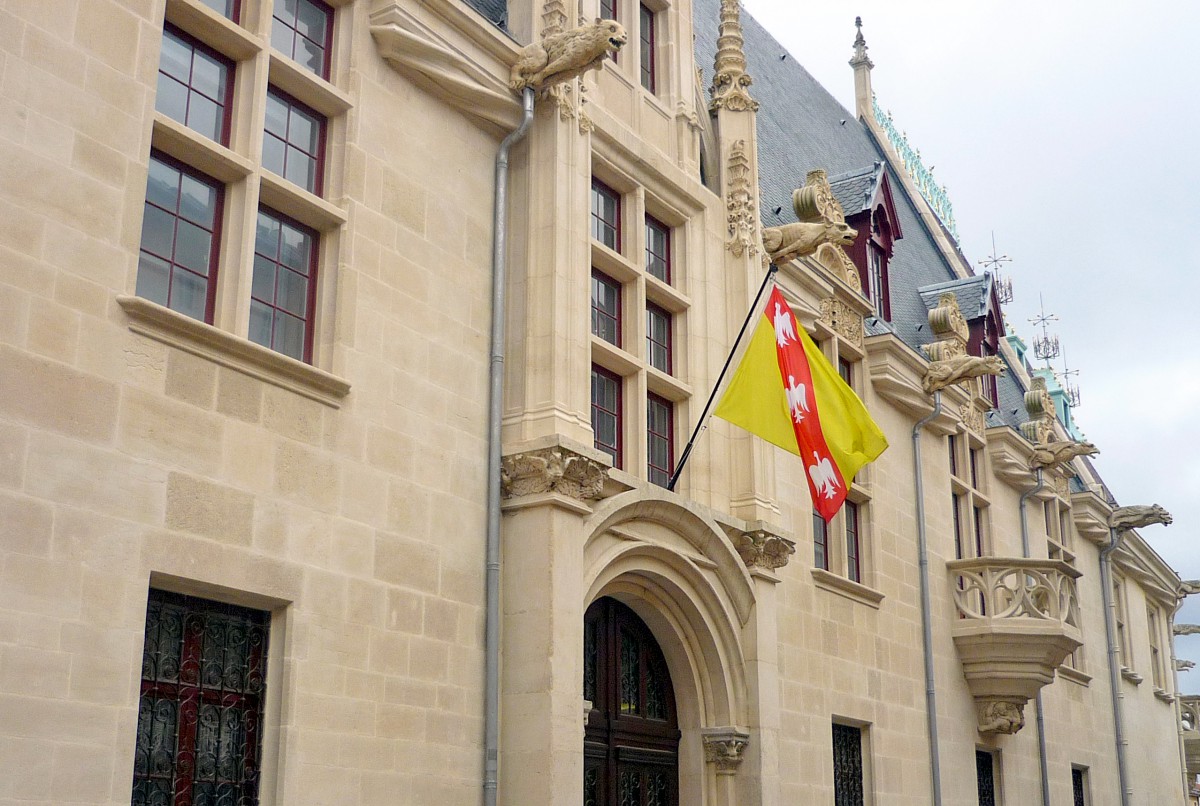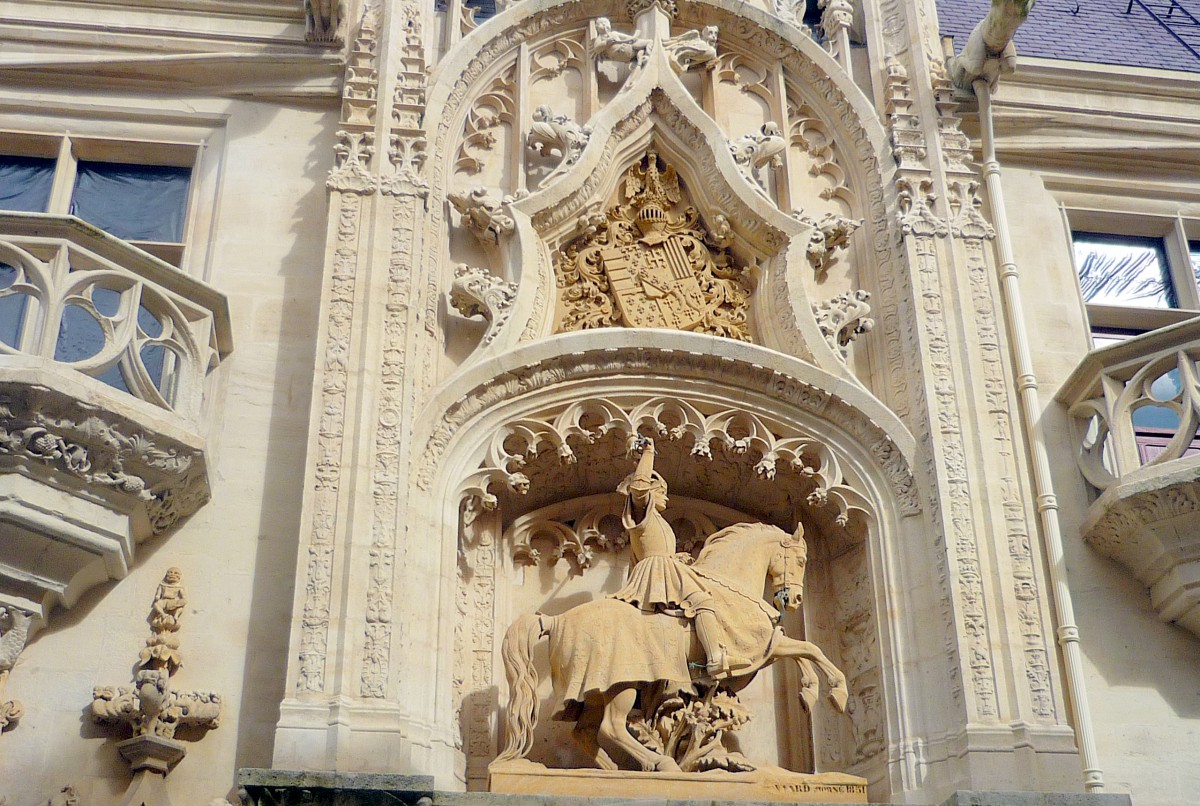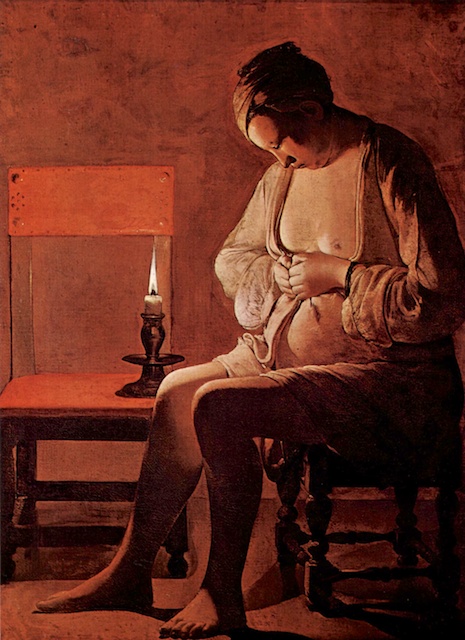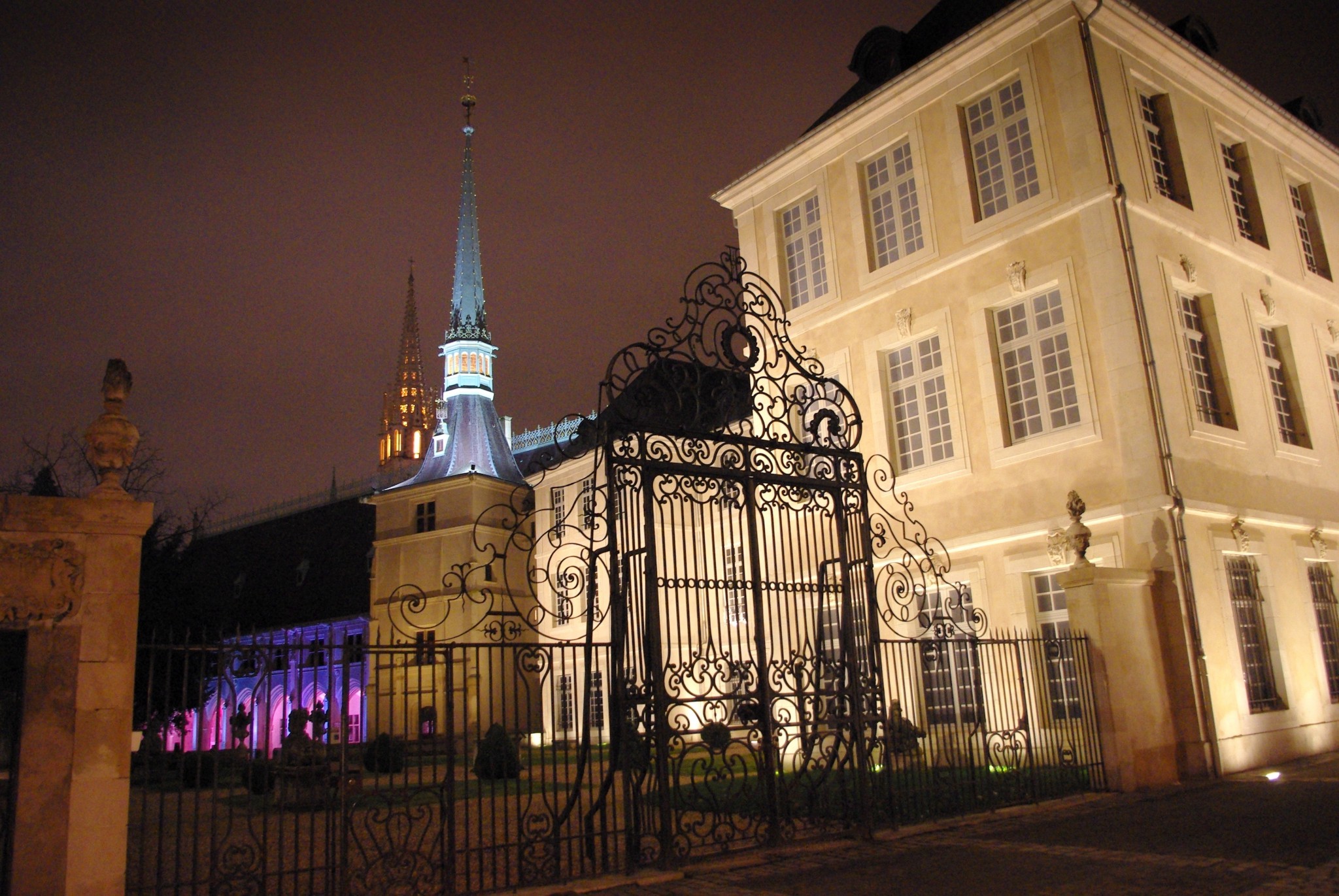The Ducal Palace of Nancy was the epicentre of the Lorraine of the Dukes. Today the Palace shows but a pale reflection of its prestigious past. For when the Dukes and their Courts inhabited it, Lorraine was an independent Duchy of significant importance, nestled between two worlds: the Kingdom of France and the Holy Roman Empire of the Habsburg.
The Ducal Palace

The Ducal Palace was then larger in size and incorporated other buildings, which have now disappeared. The long façade of the Palace that can be seen from the Grande Rue was actually re-built in the 15th century. For when Duke René II came victorious from Charles the Bold in 1477, the castle of his ancestors was falling apart. The renovation process took a long time and after René’s death, his son Antoine decided to continue the works.

For some reason, Duke Antoine had spent part of his childhood in Blois Castle. Later on, he took part in the battle of Pavia in Italy and came back to Lorraine with the ideas of Renaissance. All this explains the striking resemblance of the Palace’s portal with that of Blois. Duke Antoine was not afraid of plagiarism: he simply commissioned an equestrian statue of the Duke carved in a niche surrounded by a segmental arch. But he did not stop there. Cable mouldings, mullioned windows, a series of candelabria, grotesques and gargoyles, putti, arms trophies, balconies with carved culs-de-lampes: all added a remarkable and elegant combination of Gothic and Renaissance styles to the street-façade of the Palace.

Of course, the Révolutionnaires did not appreciate Duke Antoine’s statue and it was destroyed. Happily, a replica of the original by Giorné Viard was inserted back in the niche in 1851.
On the garden side, the 16th century staircase “Escalier de l’Horloge” (also known as “Paradise Tower”) separates the older part of the Palace and the classical wing later commissioned by Duke Leopold. The typical elements of the early Renaissance (also known as “transition Gothic”) are also displayed in the inner courtyard, by the use of equilateral arches and buttresses crowned with gothic pinnacles.
But the Palace was to be abandoned by Duke Leopold in the 18th century who preferred residing in Lunéville, 30 km South-East of Nancy. It served first as stables and then as barracks for the gendarmes. Like the Louvre in Paris, the Palace became a museum. It has displayed the history of Lorraine since 1848, thanks to the Lorraine Society of Archaeology. Another catastrophe for the Palace happened in 1871 when a fire destroyed much of the Museum’s collections and severely damaged the building.
But the tenacity of the Lorraine Society and other patrons prevailed over that which had been lost and the Museum has become one of the best in Lorraine today.

The Lorraine Museum hosts some unique collections of local artists worth a visit: Ligier Richier, Georges de La Tour and Jacques Callot, as well as works of some of Lorraine’s largest manufacturing factories. Other tapestries, furniture and paintings exhibited there date back to the Dukes’ era and reflect the prosperity of their Court.
For more information

Musée Lorrain – http://www.nancy.fr/culturelle/musee/html/musee_lorrain.php
Société d’Histoire de la Lorraine et du Musée Lorrain – http://www.societe-histoire-lorraine.com/
Nancy Tourist Centre: http://www.ot-nancy.fr
Where to stay in Nancy
This map will help you find your accommodation in Nancy according to location and prices:



